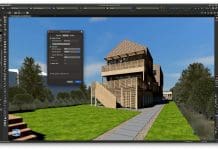A recent BIFM survey showed growing appreciation of BIM’s potential for FM – but the sector’s involvement remains limited. Mike Packham of BWA examines the findings and the relationship between FM and BIM
At first glance, FM and BIM are the same. However, there is a subtlety in the order of the wording – BIM for FM or FM for BIM – that suggests a master/slave or parent/child type relationship between the two – but which is the parent and which is the child? I am aware that some people will argue that the two should be equal partners but, as an FM consultant and one of the founding members of BIFM’s Operational Readiness group, I am very clear in my own mind that BIM should be there to support FM rather than the other way around.
In seeking to make my case for the FM and BIM relationship, it is perhaps appropriate to start at the beginning. As I think most of us will be aware (hopefully, anyway!), the use of BIM became mandatory for UK government procurement projects in April 2016. The design professions and construction industry were quick to pick up on the new initiative and it is fair to say that they have been the prime drivers for the adoption of BIM to date.
Unfortunately, FM has not been as quick off the mark as their design/construction colleagues. However, awareness of BIM is steadily increasing across the industry, particularly as the opportunities that it presents for FM to get involved in the early design phase of a project are recognised (this all in the context of the longer-term lifecycle-operational and occupational efficiency and effectiveness of the buildings that are produced as a result).
This growing awareness is evidenced by the results of BIFM’s recently published FM Awareness of Building Information Modelling survey.
Reassuringly, 91.7% of respondents had heard of BIM (where have the other 8.3% been I wonder!), while 83.5% believe “BIM will help support the delivery of facilities management”.
So much for the good news. More worryingly, the survey showed that only 40% of respondents had “some experience of being involved in a BIM project”. The percentage dived still further to 20% or below for respondents reporting themselves as having direct experience of writing and/or implementing any of the associated documentation (eg Employer’s Information Requirements – EIR, Asset Information Requirements – AIR, etc).
NB There is a whole melange of different three-letter abbreviations here. For explanation, see BIFM’s Operational Readiness Guide or the Role of FM in BIM Projects Good Practice Guide.
The survey did, however, reveal an enhanced awareness in terms of the benefits that FMs perceive are to be derived from the use of BIM, with the top three being:
1. “Strategic decision making about asset maintenance and management.”
2. “Visualisation of buildings/assets for customers, health and safety and for maintenance” and,
3. “Data transfer from construction into CAFM and other software tools.”
 To my mind, number one is by far and away the most important of the three, although I would probably broaden it out to include all of the operational/occupational services that FM is tasked with providing rather than limiting it to just maintenance.
To my mind, number one is by far and away the most important of the three, although I would probably broaden it out to include all of the operational/occupational services that FM is tasked with providing rather than limiting it to just maintenance.
One of the problems FM faces is the issue of “Big Data”. Quite often we are guilty of collecting information simply for the sake of it – essentially without any real thought as to what we are going to do with it once we have got it. Robust implementation of the processes and procedures underpinning BIM (and Government Soft Landings) will provide us with meaningful, like-for-like data that we can use to learn lessons from. If we can understand what works and what doesn’t (and more importantly why) then we can use this learning to the benefit of future projects.
Staying with the benefits of FM and BIM, number three on the list seems to me to conflict somewhat with the primary BIM concern reported by respondents to the survey; the top three concerns being:
1. “CAFM software suppliers should work on tools that allow bi-directional transfer of data between BIM and CAFM.”
2. “BIM training and how facilities managers will access data in 3D models at handover” and,
3. “Lack of training and cost of training associated with BIM.”
I know from my own experience that data transfer between different applications is not usually as simple as pressing a button and this is certainly true in the case of BIM/CAFM. Equally, I am aware that the software providers are working on the issue and I am sure that any difficulties will eventually be resolved – but the question is: What do we do in the interim?
Cost raises its head at number three on the FM list of concerns. I actually think the issue is a lot broader than simply the cost of BIM training. Once you have a BIM model then it is only of long-term value if it is kept up-to-date – self-evidently, there will be a cost associated with this.
Broadening this out still further, there is a cost associated with FM involvement in the design development process (as envisaged by BIM/Soft Landings). I fully accept that this investment will pay for itself many times over during the lifecycle of the building. However, the concept of investment now for long-term benefit is a hard sell and will continue to be so until market perceptions can be changed and the disjoint between capital and revenue expenditure is overcome.
In my view, to meaningfully influence the debate we are going to need hard facts and figures – in simple terms, £x invested in BIM/Soft Landings during the design/construction stage generates £100x of efficiencies over the life of the building. Even then for some organisations, the brevity of their interest in occupying a particular building will mitigate against their willingness to make the necessary investment.
So, to return to the FM and BIM question at hand – is it “BIM for FM or FM for BIM?” As a long-standing supporter of BIFM’s BIM endeavours, I strongly believe that it should be the former. However, as demonstrated by BIFM’s recent survey, 18 months on from BIM going live, FM involvement remains limited. My fear is that if we allow this to continue we, ie FM, will simply be there to make up the numbers, with project teams paying lip-service to the long-term implications of their “products”. In other words, it will become FM for BIM with the whole purpose of the initiative being substantially diluted.
Director
BWA (Europe)
Tel: +44 (0)208 460 1111














